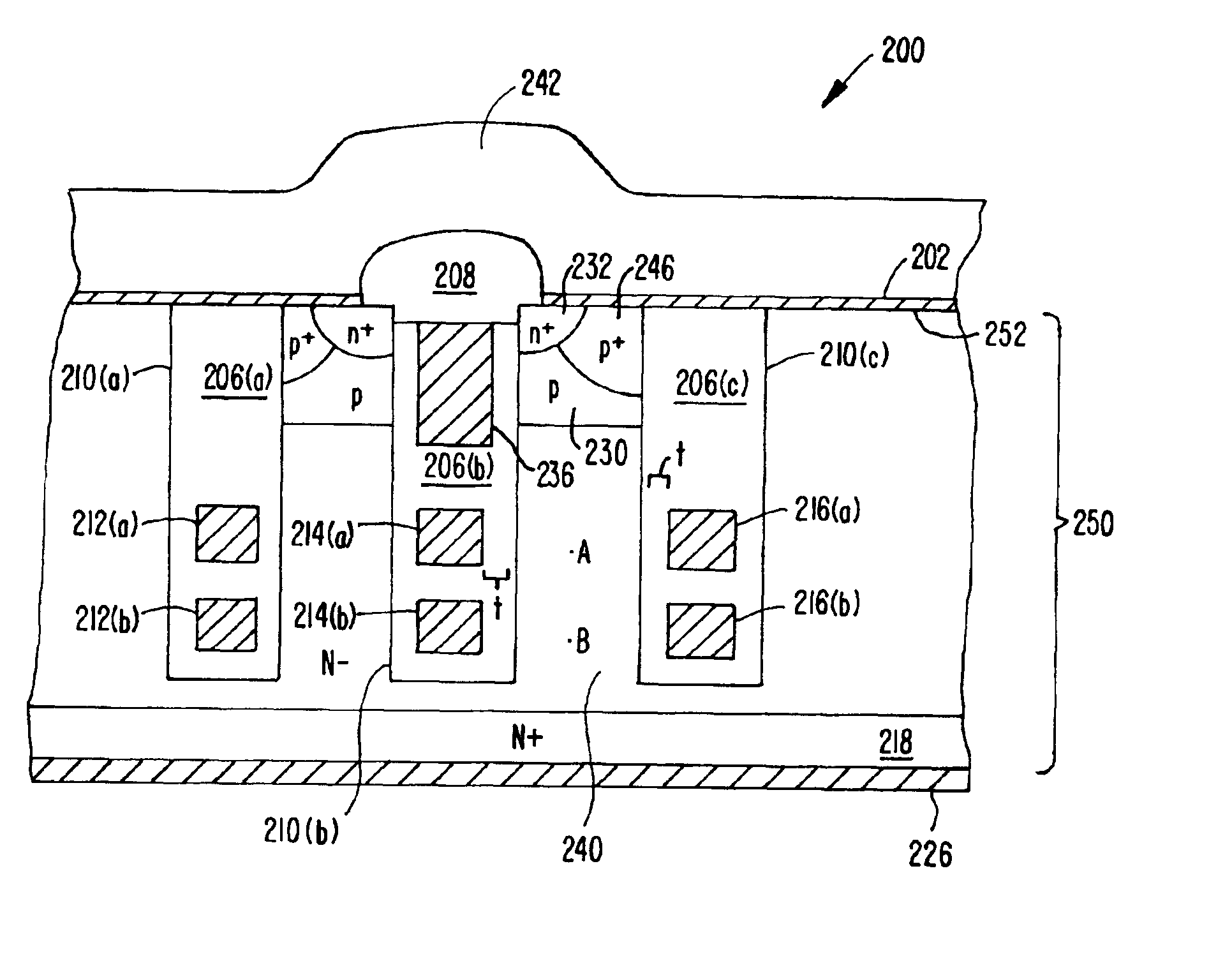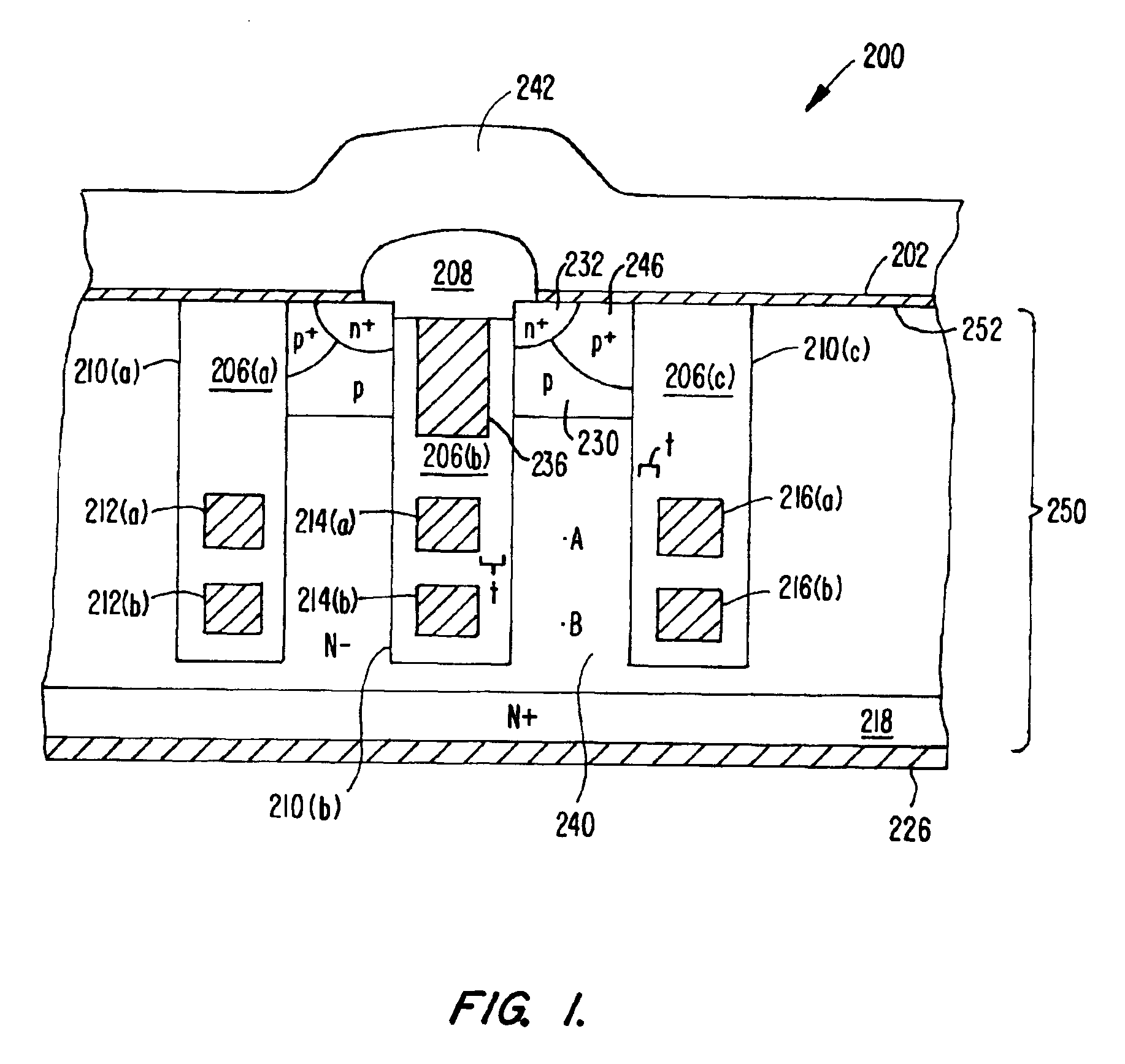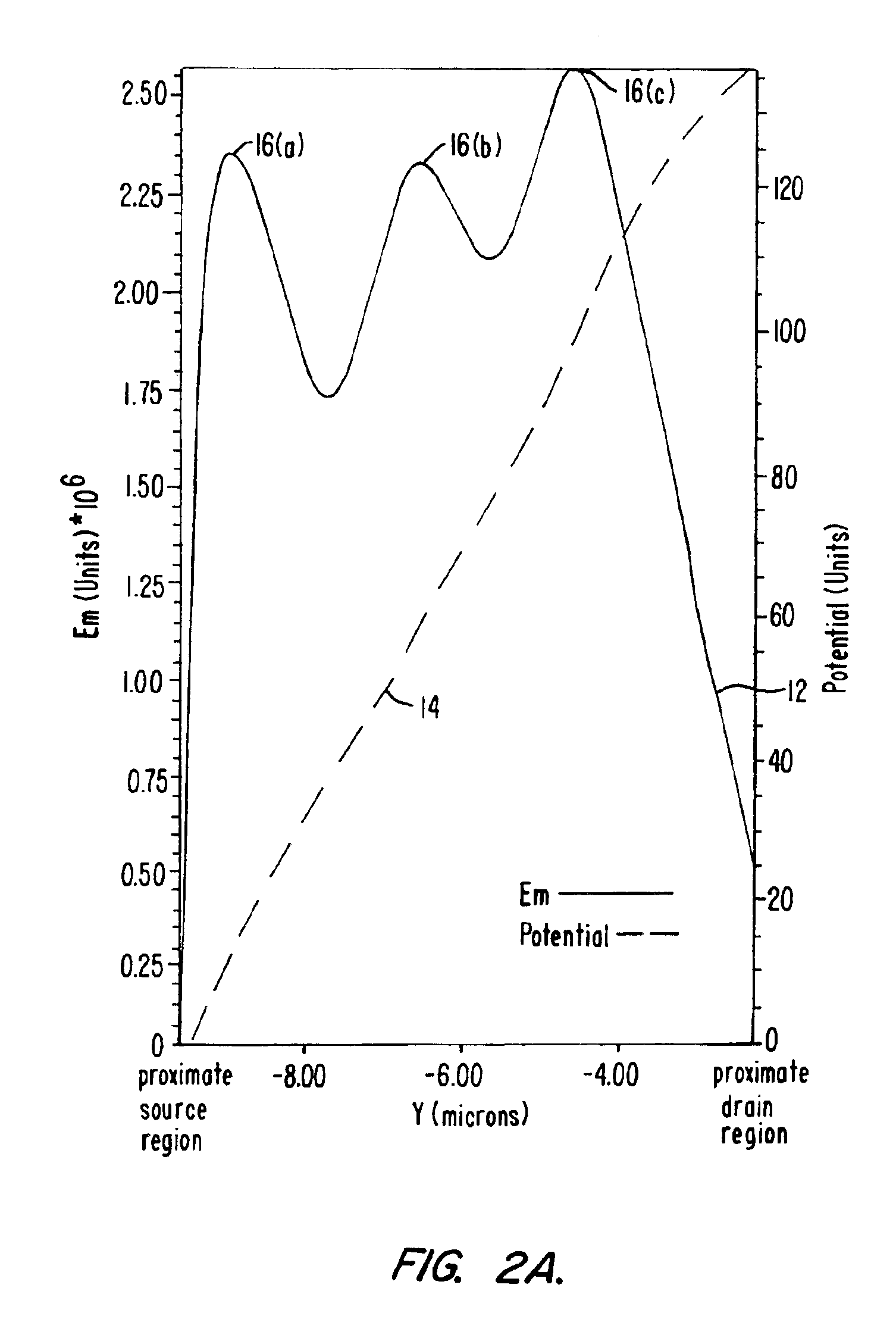Method for forming a semiconductor structure with improved smaller forward voltage loss and higher blocking capability
a semiconductor structure and forward voltage technology, applied in the field of semiconductor technology, can solve the problems of low on-resistance, carrier concentration in the drift region of the mosfet device cannot be reduced, and it is not desirable to increase the dopant concentration
- Summary
- Abstract
- Description
- Claims
- Application Information
AI Technical Summary
Benefits of technology
Problems solved by technology
Method used
Image
Examples
Embodiment Construction
[0020]Embodiments of the invention are directed to semiconductor devices. The semiconductor devices are preferably power semiconductor devices. Examples such semiconductor devices include vertical MOSFETs (e.g., planar gated or trench gated vertical MOSFETs), lateral MOSFETs, bipolar transistors, power diodes, etc.
[0021]The semiconductor devices comprise a semiconductor substrate such as a silicon or gallium arsenide substrate. The semiconductor substrate comprises a region of a first conductivity type (e.g., an N-type region) and can have a major surface. A region of a second conductivity type (e.g., a P-type region) is also formed within the semiconductor substrate.
[0022]In embodiments of the invention, the semiconductor device includes one or more charge control electrodes. The charge control electrodes may be biased with a different potential than the gate, source, and drain to control the electric field within the semiconductor material. In some embodiments, these charge contro...
PUM
 Login to View More
Login to View More Abstract
Description
Claims
Application Information
 Login to View More
Login to View More - R&D
- Intellectual Property
- Life Sciences
- Materials
- Tech Scout
- Unparalleled Data Quality
- Higher Quality Content
- 60% Fewer Hallucinations
Browse by: Latest US Patents, China's latest patents, Technical Efficacy Thesaurus, Application Domain, Technology Topic, Popular Technical Reports.
© 2025 PatSnap. All rights reserved.Legal|Privacy policy|Modern Slavery Act Transparency Statement|Sitemap|About US| Contact US: help@patsnap.com



